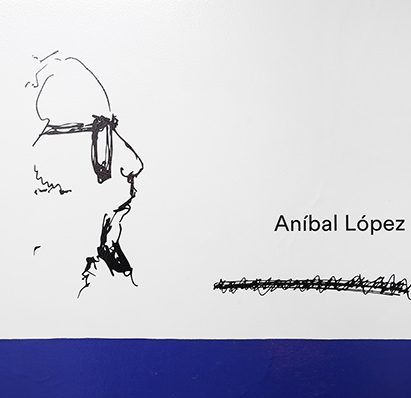
Aníbal López (1964-2014) was a Guatemalan visual performance artist who worked through a variety of artistic mediums, both traditional and untraditional, to convey political and societal commentaries (Luján 2009). Aníbal López signed each of his works as “A-1 53167”, his ID registration number in Guatemala (Bruno, Barreto, and Szafir 2012). López’ works highlight societal issues he saw both within Guatemala and internationally.
One of Aníbal López’ works of performance art involved the use of a piglet he had named “Hugo” (Escalon 2014). To establish a commentary on the thoughtlessness of many consumers, López allowed guests to meet the piglet, who he had dressed in a bow, before he slaughtered and baked the piglet on the opening day of his exhibit. He subsequently served the piglet to the guests in an effort to force them to confront their typical lack of thought toward the goods they consume (Escalon 2014).
Aníbal López has also used his performance artwork to provide political commentary on significant events in the country’s history. In his work 30 de Junio, 2000, López employed urban intervention by spreading coal across the streets of downtown Guatemala City, where a military parade was scheduled to take place (Bruno, Barreto, and Szafir 2012). When the soldiers walked down the streets for the parade, their boots spread the remains of the coal along the parade route, providing a clear trail that the military had followed. López stated that he chose to use coal as his medium because it was often used in mass graves or to burn victims of the Guatemalan genocide at the hands of military death squads. López’ work provided pollical commentary on how the Guatemalan government attempts to conceal its history of violence, despite the public knowledge of the events of the civil war (Bruno, Barreto, and Szafir 2012). Aníbal López consistently considers the past and the culture of Guatemala when creating his works in an effort to cause significant reflection among viewers. López’ works spark conversations about the human rights abuses of the military during the war, mass consumerism, and public apathy to events told only through conventional means.
Works Cited
Bruno, Fernanda, Paola Barreto, and Milena Szafir. 2012. “Surveillance Aesthetics in Latin America: Work in Progress.” Surveillance & Society 10(1): 83–89.
Escalon, Sebastian. 2014. “The Black Herald.” Plaza Pública. https://despacio.cr/event/anibal-lopez.
